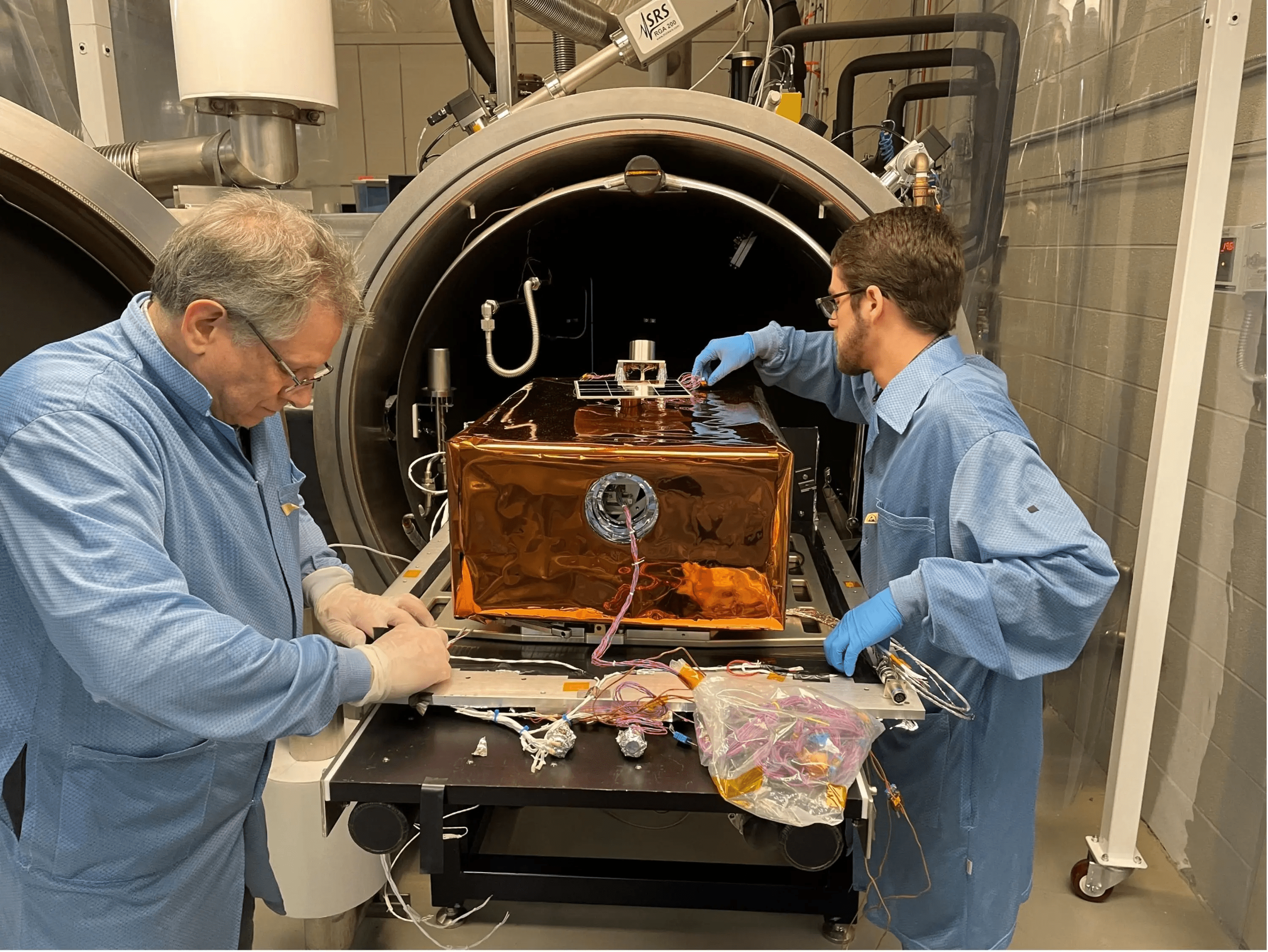3 min read
Douglas Isbell
Headquarters, Washington, DC
(Phone: 202/358-1547)
David Morse
Ames Research Center, Moffett Field, CA
(Phone: 650/604-4724)
Becky Rische
University of Texas at Austin
(Phone: 512/471-7272)
RELEASE: 99-85
In one final blast of scientific productivity, NASA's Lunar Prospector mission will end abruptly in the early morning hours of July 31 with a controlled crash into a crater near the south pole of the moon.
The scripted, violent end of Lunar Prospector at 5:51 a.m. EDT is designed to provide direct evidence of the existence of water ice in permanently shadowed craters near the moon's poles.
Scientists hope that the estimated 3,800-mph impact will exhume water vapor and rocky debris that may be detectable for several hours, although data analysis could take days or even weeks if the signal is faint. Coordinated observing teams will use NASA's Hubble Space Telescope and Submillimeter Wave Astronomy Satellite, and ground-based instruments including the McDonald Observatory in Texas and the Keck telescope in Hawaii, to seek signs of the water vapor or its byproducts.
While the probability of successful detection is estimated to be less than 10 percent, it will be a fittingly creative finish to a low-cost Discovery Program mission that has exceeded all expectations after more than 6,800 lunar orbits in 18 months.
"Regardless of the outcome of this final bold experiment, Lunar Prospector has yielded a gold mine of science data," said Dr. Henry McDonald, director of NASA's Ames Research Center, Moffett Field, CA, which has managed the mission. "We now have invaluable global maps of the moon's gravitational and magnetic fields, and the distribution of its key elements, giving us a much better understanding of the origin, evolution and composition of our rocky neighbor."
Launched on Jan. 6, 1998, from Cape Canaveral Air Station, FL, aboard an Athena 2 rocket, Lunar Prospector reached the moon in four days. Shortly after entering orbit over the lunar poles, its five science instruments began expanding the limited equatorial measurements made by the Apollo command modules into global, high-resolution data sets.
Lunar Prospector's data gathering has resulted in a series of discoveries and new scientific tools, including:
- tentative evidence that water ice exists in shadowed craters near the moon's south and north poles.
- the first precise gravity map of the entire lunar surface.
- confirmed the presence of local magnetic fields that create the two smallest magnetospheres in the Solar System.
- the first global maps of the moon's elemental composition.
In exceeding its design life, the $63 million Prospector mission has exhausted the bulk of its fuel and battery power. Although the drum-shaped probe will have a mass of only 354 pounds (161 kilograms) at the end, its impact energy will be equivalent to crashing a two-ton car at more than 1,100 miles per hour.
Further information about Prospector and its science data return can be obtained at the project Web site:
http://lunar.arc.nasa.gov
Additional information about the end-of-mission sequence is available at:
http://www.ae.utexas.edu/~cfpl/lunar/
Dr. Alan Binder of the Lunar Research Institute, Tucson, AZ, led the Lunar Prospector team. The spacecraft was built by Lockheed Martin, Sunnyvale, CA. Other participating organizations include the Department of Energy's Los Alamos National Laboratory, NM; NASA's Goddard Space Flight Center, Greenbelt, MD; and NASA's Jet Propulsion Laboratory, Pasadena, CA. An external team of engineers and astronomers led by Dr. David Goldstein of the University of Texas at Austin will conduct the end-of-mission telescopic observations and data analysis.







